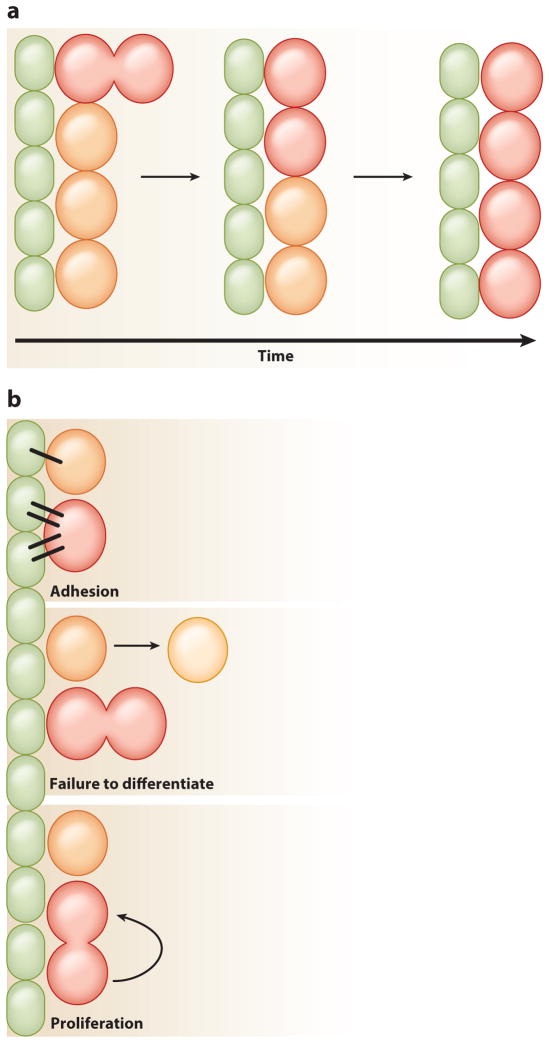Figure 5.
Mechanisms of stem cell competition. Niche cells ( green) and stem cells with a fitness advantage (red ) or disadvantage (orange) are indicated. (a) When neutral drift dynamics are skewed, stem cells with a fitness advantage take over the niche, whereas those with a disadvantage are lost over time. (b) Three different mechanisms can modulate stem cell competition within the niche: adhesion, failure of daughters to differentiate, and different proliferation rates. Stem cells that adhere better to the niche will remain longer than those that do not. Stem cells that produce daughter cells that fail to differentiate have a greater chance of those daughters staying within the niche and remaining stem cells. Stem cells with a faster proliferation rate will produce more daughters than their neighbors, increasing the likelihood that their daughters will remain stem cells.

